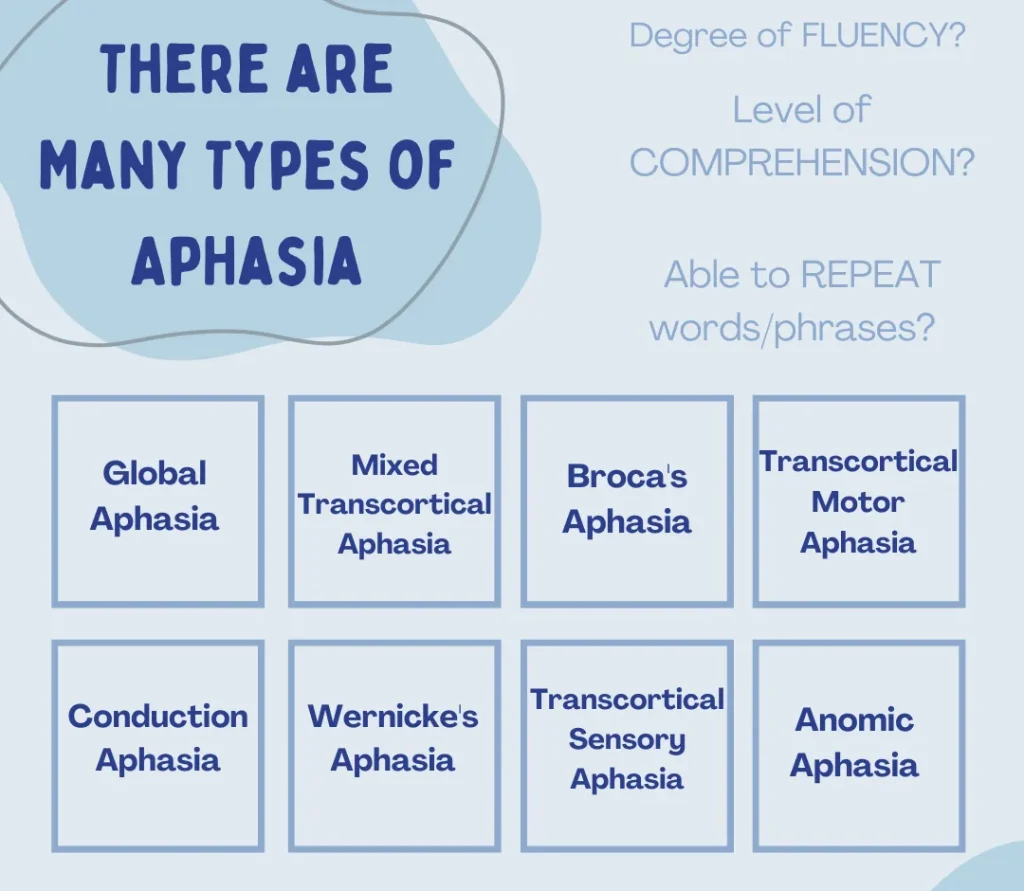This post summarizes the research article by Klein and Micic (2014).

Everyone’s experience with aphasia is different. Did you know there researchers have identified several different types of aphasias which can be told apart based on cause (etiology), symptoms, and brain lesions?
Depending on the cause, aphasia is acute or progressive. Acute aphasia develops suddenly and is associated with strokes or internal bleeding. Progressive aphasia develops slowly and may result from a brain tumour or neurodegenerative disease. (Klein & Micic, 2014)
As for the presentation of aphasia, a primary distinction is between fluent and non-fluent aphasias. There are three subtypes of fluent aphasias, and three subtypes of non-fluent aphasias. These can be categorized again by the person’s ability to comprehend spoken language, and then again by their ability to repeat speech back. (Klein & Micic, 2014)
Different areas of the brain are involved in various aspects of language processing. Neuroimaging such as MRI and CT scans provide information about which areas of the brain are damaged. This information supplies the aphasia diagnosis.
While the differences in cause, symptoms, and brain lesions provide a basic classification for eight aphasia types, this isn’t the end of the story. Two people with the same type of aphasia will have speech and language challenges unique to each of them. Clinicians perform thorough language assessments involving speech, reading, writing, comprehension and more to identify the degree of impairment in each aspect of language. (Klein & Micic, 2014)
Together, these classifications and assessments help speech-language pathologists to provide patients with appropriate therapy tailored to their unique experience.
Klein, G., & Micic, D. (2014). Aphasia. In A. Ettinger & D. Weisbrot (Eds.), Neurologic Differential Diagnosis: A Case-Based Approach (pp. 34-40). Cambridge University Press. doi:10.1017/CBO9781139028899.007

